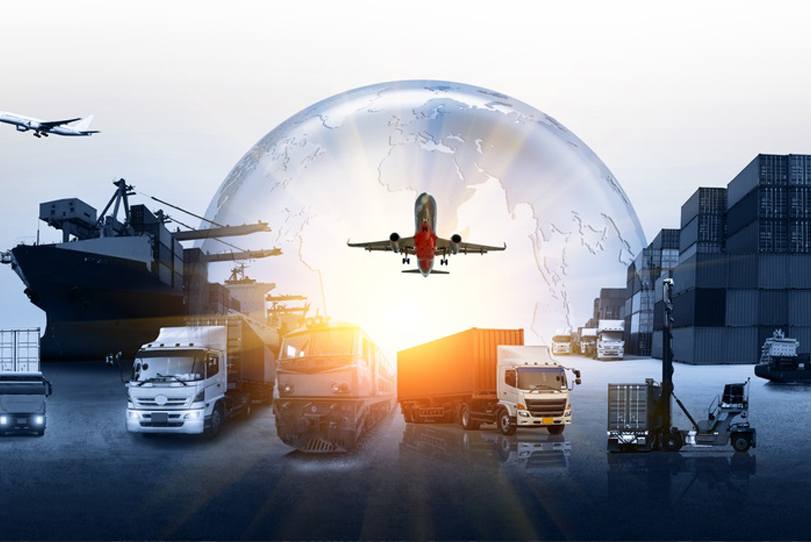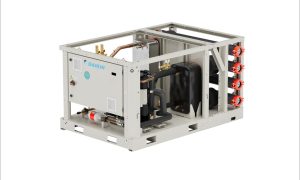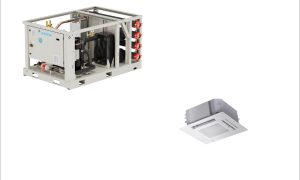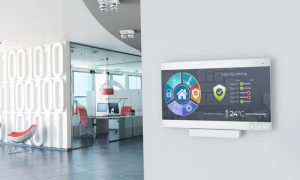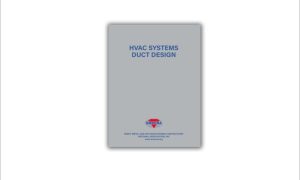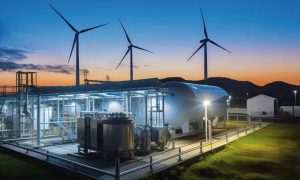Industry experts opine that both the government and private sector need to make significant investments in addressing the current gap in the Indian cold chain industry.
From the time, Covid cases were reported; its devastating impact led to the challenges of protecting, transporting and safely storing temperature sensitive goods worldwide. The Cold chain logistics management process deals in storing and delivering products at specific refrigerated temperatures. The required temperature instability would make the product unusable, resulting in its waste value. The transportation of temperature sensitive materials relies on thermal and refrigerated packaging methods and logistical planning to protect the value of shipment.
Global cold chain logistics market is projected to reach $585,105 mn by 2026, from approximately $160 mn at a CAGR of 17.9% from 2019 to 2026. Cold chain begins with storage facilities at manufacturers’ place, packaging to prevent spoilage; inventory monitoring including temperatures, humidity level and other factors that can affect the product to be delivered by land, air, rail or sea. However, the containers should be equipped to maintain temperature requirements ensuring safe product handling as it reaches the door step of the end user.
Emerging trends and cold chain supply potential
Good opportunities and investment potential in the cold chain domain are prevailing and new trends are emerging. We expect the uninterrupted supply chain transport to destination as pandemic has also become a trend.
Expressing his opinion Mr. Pankaj Mehta, Managing Director, Carrier Transicold India, opines considering the interesting point in view of the pandemic and the importance felt in the cold chain, for India the cold chain is very successful in many areas. Vaccination is one of them. Even before the pandemic, one of the world’s largest immunisation programs was running for children and pregnant women. So, with a very effective cold chain network going down to village level and use of many solutions effected the last mile delivery. The person, who was going to inoculate, was carrying vaccinated related material in small, thermo cool or insulated carry bags. So, the change is effective.
There exists a thriving dairy sector, as well as ice cream consumption. It’s totally dependent on a very effective cold chain. Several examples of a viable and profitable cold chain in India do exist. Opportunities are definitely seen in many areas. Also, regarding the cold chain of the future, we need to keep an eye on it. What is the next level of the cold chain! It is visualised as sustainability connected including data transparency. How energy efficient it can become, how greener it can become, those are the areas that need to be looked at.
Penetration of cold chain infrastructure
Mr. Ankit Jhanwar, Vice President, Pluss Advanced Technologies, expressing his view stated, if one looks at the NCCD data, they show a huge gap in the number of trucks required and the number of trucks which are available in the market. The penetration is dependent on a lot of various measures. The investments are coming in from not only from the private entities but also from the government bodies and exercising the right policies. The emphasis from the government promoting the cold chain infrastructure is still not adequate. They need to do more in terms of policies and investing in the right cold chain infrastructure. So, addressing the gap cannot only be through the FMCG companies or through the big private players it has. Also, initiative needs to come from the government. It can be through public private partnerships. So, this has to play a big role. This will be a big factor going forward wherein the government and the private sector both need to do significant investments to address the current gap in the Indian cold chain industry.
Temperature-controlled vans and containers growth in Indian market
Stating that the temperature controlled containers are really going to grow, Mr. R Anish Simha, Senior General Manager, RINAC India Limited points out, pre-cooler technology has to be more spread across and then the cold chain starts from there, where actually it requires temperature control vehicles. In addition to that, temperature monitoring needs to be done. The temperature of the product right from the time it is processed till it reaches the end user is monitored. Hence, more emphasis is being given on the last mile delivery.
However, further he shared that maintaining the temperature of a product which has already been brought to its storage; managing it is easier than bringing down the temperature of the product initially, so one should also concentrate there to produce energy and surely the losses discussed are basically for fruits and vegetables, which is what is being taught and experienced.
And for chocolates and ice cream it’s totally another industry and one cannot mention losses because this loss is what goes towards fruits and vegetables. So, there was some communication misunderstanding there. But overall, both ways the industry has to work. One requires larger cold stores and technologies to bring down the temperatures in an energy efficient manner. And it has also to be monitored.
This is what is felt and that is what the government is aiming to see. So, as already known, and also, it has been there that frozen is fresher than fresh so how people would like to take it. But then that is one of the jargons in which people are selling and for all these last mile deliveries, that are also selling frozen products like ice cream or any other processed food. So, both ways, as it goes, one must concentrate on energy efficiency.
Delivering the right product to customer
There is great potential in growth and agro products have the least tapped potential. Probably that is a great future ahead. It is about how this kind of technology is being used. Talking about encouraging cold chain and encouragement of cold chain definitely comes up with probably either value addition or by consumers getting the products at a more affordable cost.
Mr. Rajat Gupta, Founder and Director at TESSOL expresses his views that as a consumer, in today’s post Covid world, people are differentiating between good and not so good products. And if one finds a source which is reliable, hygienic, properly managed, temperature controlled, quality sort of, which today also appeals to today’s quality product and each one is willing to pay a bit of a premium on it.
So, there are two ways in which brand value can be achieved, which is firstly, getting a bit of a premium on product compared to those selling it, and secondly getting a wider reach and larger market share because everyone will always be spending money on marketing for that. So instead of that, spending a little bit on a product is viable in order to ensure that there is a longer-term plan.
If one looks at a very simple example of the poultry industry, the numbers from unorganised to organised have changed. Players who were one of the largest poultry processors have not been able to become the front-end brands, but the front-end brands have become much bigger. Some of these fronts and brands are doing about 100 crores a month for revenue, which these companies have not even thought of. Building plants is not the solution! It is the way that they have been able to deliver and they have invested in cold chain infrastructure.
So, the point is that if one makes a lot of effort in making a product well, storing it well, but if it is not delivered in the right way to the customer; he’s not willing to pay for it because he does not know what has been done earlier? How it is stored, pre-cooled, how it is packed, how it is delivered to the end user is what matters and that’s the impression created.
So, the point is that the whole sort of chain behind is of no value. It is definitely a value because one will not get the kind of product till the end. But if the last mile connection is not there then a lot of the effort which is put, falls only in the cost saving bracket. It does not fall into additional revenue generation. As a brand, that is where people are trying to understand. If one looks at even the e-commerce players, the kind of packaging that they’re doing on top of their product – that is the cost but that packaging is what is differentiating them from one player to the other. If there were five players who were delivering in 10 minutes! Which one does one buy from? So, that’s so. That’s the limited point here. So as a brand one needs to think in that direction.
The regulatory constraints
Mr. Jonathan Brett Mario Gomez, Crystal Group, exemplified compared with Australia which has stringent rules and regulations. Everyone in our country must have had some dealings with them and they actually even reward the international clients if they are able to stick to their rules and regulations.
Take for example an egg. They have a barcoding system that is printed on the egg that can actually be scanned by anyone across the world that will tell from which farm and which chicken it actually was brought in. The exact process from the minute it was ready at the farm to land in one’s hand when one is ready to pay for it. And that is where regulation is highly important.
When the entire world can come with one solution that is properly available, enough data is required to make an informed decision. Then customers like for example the last mile delivery; will be able to understand why they’re paying for the product at whatever price. And if the cold chain can actually help reduce the wastage, that can actually be curved through all of these regulations, then one can deliver products or the companies can deliver products at a much cheaper rate because one of the biggest issues that everyone has is spending on things that are not giving us that ROI.
So, that is why a proper regulation is required. The new technology, the new RFID barcode scanners, the digital doors, the access that is given to the remote monitoring, the access, the control, everything actually is data. So, that can actually provide an insight into where exactly the problems are. And that starts with regulation.
PCM future contribution for an uninterrupted cold chain
Mr. Ankit Jhanwar, Vice President, Pluss Advanced Technologies remarks, how quickly everybody adopts it. So, he emphasised modellers and the achievers to be more open to trying the PCM technology and not just rejecting it. Frankly speaking, the regular purchase managers just do not get it. And the top management does not have the time to try it. It all boils down to collectively investing in the technology. Believing in it. Frankly, it has been proven across the world. It is not something one is doing out of the blue. Any technology takes time. The inflection point in the pharmaceutical space is already coming, and seeing a lot of adoption in PCM based products in the pharmaceutical space.
However, in the food space, especially the trucks in the last mile delivery, all are struggling and especially because the margins are lower there. It’s the inflection point. That should also come in the next one or two years, but it will all be through a collective effort and it is a request to everybody in the industry.
Adding further to PCM technology, Mr. Pankaj remarks, one important factor to be kept in mind is where the business case is. Business opportunities can be sensed by the industry very clearly and where the business case is the existing supply chain and logistics. Everything falls in place. There are several examples of successful usage of cold chains where there is a business case and the business makes profits.
So, it’s a question of the industry seeing the business case, and also the point of consumers realising the value of the cold chain. It’s a shelf life that one provides a customer who sees a product coming to him and where he can still consume it. He would rather prefer that than a product which he buys within a couple of hours. One has to throw it away because the shelf price is already expired during the journey, so at both ends in the industry side it has to be the business case and the consumer is ready to pay. Certainly, for a product end user sees better value.
Conclusively, cold chain business potential is vast in the country and has assumed importance in view of the pandemic which rather provided opportunities to go more digital and automate the processes from hygiene point of view. Governmental support is also required to encourage the HVACR industry and contribute to the infrastructure needed at transit stops and further moving in the chain till and trucking and transport reaches the final destination in the hands of the end consumer.
Cookie Consent
We use cookies to personalize your experience. By continuing to visit this website you agree to our Terms & Conditions, Privacy Policy and Cookie Policy.

